THE CROSSBOW CANNIBAL
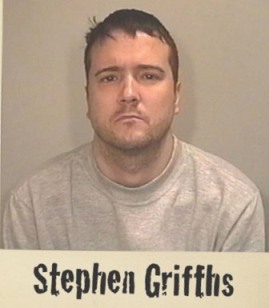
Name: Stephen Griffiths
DOB: 24 December 1969
Profession: Student
Aliases: The Crossbow Cannibal, The Lizard Man
Previous convictions: Assault, shoplifting
Number of victims: 3 (at least)
Apsychology graduate and PhD student in Applied Criminal Justice Studies, Stephen Griffiths is destined to be remembered as ‘The Crossbow Cannibal’. The gruesome moniker didn’t come from the popular press, but from the man himself. On 28 May 2010, wearing a black shirt and jeans, he stood in a packed magistrates’ court and boldly gave the name in place of his own.
The declaration was met with gasps from a crowd that had no idea what it was he had done with the three women he was accused of murdering. When asked by the court clerk for his address, the Crossbow Cannibal replied, ‘Here, I guess.’ These short lines were part of a three-minute performance that ended with the 40-year-old confirming his date of birth.
Stephen Shaun Griffiths was born in Dewsbury, West Yorkshire on 24 December 1969 – like all children, he couldn’t wait for Christmas Day, went the family joke. The eldest of three children, Shaun, as he was known, was a slender child. The Crossbow Cannibal’s first moniker was ‘The Stickman’.
Unlike his siblings, Griffiths was introspective and quiet. ‘You could never get a read on him,’ remarked one uncle. ‘He was very much a loner.’
Griffiths didn’t seem to care much for football or any other interests of most boys his age. This is not to say that he didn’t attract attention. One former neighbour recalls that as a child the future murderer had a habit of killing and dismembering birds: ‘It looked as if he was enjoying what he was doing. He wasn’t dissecting them bit by bit, he was ripping them apart.’
In trouble
When Griffiths was still very young, his parents split up. He moved with his mother, sister and brother to the nearby city of Wakefield. There he attended the exclusive and expensive Queen Elizabeth Grammar School, the alma mater of serial killer John George Haigh, ‘The Acid Bath Murderer’.
He was a diligent student, but outside school Griffiths was often in trouble with the law. In his early teens he was caught stealing from a garage. At the age of 17, he slashed a supermarket manager with a knife when he was stopped for shoplifting. Griffiths received a three-year sentence for that attack, some of which was spent at a high-security mental hospital. One doctor diagnosed Griffiths as a ‘sadistic, schizoid psychopath’. Another recorded that the youth had a ‘preoccupation with murder – particularly multiple murder’. Griffiths told his probation officer that he believed he would one day become a serial killer.
Within three years, Griffiths was back in prison, this time for holding a knife to the throat of a young girl. He could give no reason for his actions.
Not long after his release, the future Crossbow Cannibal got into trouble again, this time for possessing two airguns and carrying a knife in public. Despite his years of incarceration, further run-ins with the law and wildly unpredictable, anti-social behaviour, Griffiths managed to earn a degree in psychology from Leeds University. He was accepted at the University of Bradford, where he began six years of work on an academic thesis, ‘Homicide in an Industrial City’, comparing modern murder techniques in Bradford to those used during the second half of the 19th century. Griffiths incorporated some of his research in ‘The Skeleton and the Jaguar’, a website he established that focused largely on serial killers.
He spent a good amount of time online, frequenting social networking sites. Griffiths would identify himself as ‘Ven Pariah… the misanthrope who brought hate into heaven’, under which guise he would post his disturbing thoughts. ‘Humanity’, he once wrote, ‘is not merely a biological condition. It is also a state of mind. On that basis, I am a pseudo-human at best. A demon at worst.’
His relationships with women tended to be abusive and short-lived, yet he fathered at least one child. Griffiths was arrested numerous times for domestic violence, and once appeared in court for leaving threatening messages on the voicemail of a former girlfriend.
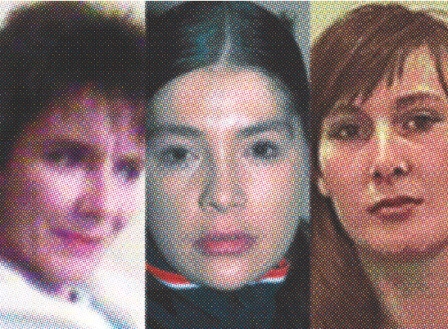
Photos released by the police of victims Susan Rushworth, Suzanne Blamires and Shelley Armitage
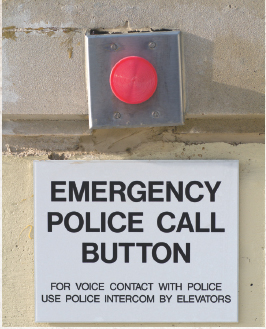
Things got so bad in the building where Griffiths lived that they fitted an emergency alarm
Sinister habits
From his teens on, Griffiths was one of those people the media describes as being ‘known to police’. In 2008, attention increased after local librarians reported that he’d been borrowing books on human dismemberment. This warning sign coincided with problems at the building in which he rented a small bachelor flat. Male neighbours were being threatened, while the females increasingly became the focus of untoward attention. Two women reported that a once friendly and polite Griffiths had become extremely hostile after his sexual advances were rejected.
The building management became so concerned that it installed closed-circuit cameras and a panic button for its caretaker. An unnamed senior manager with the company that owned the building was convinced that it was only a matter of time before Griffiths committed murder… which, of course, he did.
It’s likely that the true number of women murdered by Stephen Griffiths will never be known. Ultimately, he would admit to just three, the first being 43-year-old Susan Rushworth.
A sex trade worker who struggled with heroin addiction, she was last seen alive near her home during the dying minutes of 22 June 2009. In the months that followed police made numerous appeals to the public, hoping for some hint as to the missing woman’s whereabouts.
What the authorities didn’t know, but perhaps suspected, was that Susan Rushworth was long dead. It’s almost certain that she was killed by Griffiths on the evening of her disappearance.
On April 26 2010, another prostitute, 31-year-old Shelley Armitage, disappeared while working the streets of downtown Bradford. No one noticed at first; two days passed before she was reported missing.
Less than a month later, on 21 May, a Friday, Suzanne Blamires also vanished from the streets of Bradford. The mystery behind the disappearance of this 36-year-old sex trade worker would last only a weekend.
We know that Blamires accompanied Griffiths to his flat, most likely willingly. We also know that she tried to leave. The same security cameras that had been installed in Griffiths’ apartment building by concerned management captured her sudden and swift end. Grainy footage shows Blamires fleeing Griffiths’ flat with the PhD student in pursuit. He knocks her unconscious, and leaves her lying in the corridor. Moments later, Griffiths returns with a crossbow, aims and shoots a bolt through Blamires’ head. Before dragging the woman back into his apartment, he raises his crossbow to the camera in triumph. Moments later, Griffiths returns with a drink, apparently toasting the death. Still later, the murderer can be seen carrying a series of garbage bags out of the building.
Griffiths once appeared in court for leaving threatening messages on the voicemail of a former girlfriend
The first person to view these images was the building caretaker. He called the police – but not before first selling the story to a tabloid newspaper.
Griffiths was arrested within hours. Asked to confirm his identity, he replied, ‘I’m Osama Bin Laden’, later adding cryptically, ‘I’ve killed a lot more than Suzanne Blamires – I’ve killed loads. Peter Sutcliffe [the Yorkshire Ripper] came a cropper in Sheffield. So did I, but at least I got out of the city.’
Authorities searched his home and the immediate area for any sign of Blamires and the other missing women. The small flat was lined with shelves holding hundreds of horror films and books on serial killers, terrorism and genocide. It wasn’t strictly true that Griffiths lived alone; he kept two lizards, which he fed baby rats that he bred for just that purpose.
The first body was discovered not by the police, but by a member of the public in the River Aire. Cut into at least 81 separate pieces, the corpse was not complete. Police divers would recover a black suitcase containing the instruments Griffiths had used to carry out the dissection. As would become clear in the coming days, Griffiths had consumed several pounds of flesh from his victims. The remains would be identified as belonging to Blamires. Identification came without the aid of DNA testing – her head, with the crossbow bolt, was found in a rucksack. At some point Griffiths had embedded a knife in her skull.
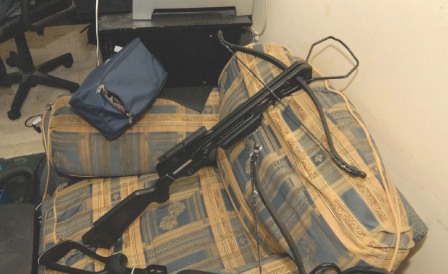
Crossbows photographed in Griffiths’ flat: Suzanne Blamires’ head, pierced by a crossbow bolt, was found in a rucksack in the River Aire at Shipley
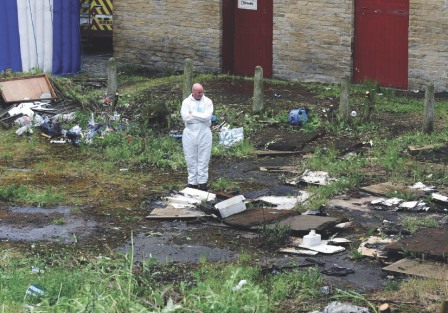
A forensics officer sifts the area outside Griffiths’ home
The bathtub ‘slaughterhouse’
During police interrogations, the man who had rambled continuously on the internet proved oddly reticent. When asked why he felt the need to kill, Griffiths was initially flummoxed. ‘I don’t know,’ he said. But then he added: ‘Sometimes you kill someone to kill yourself, or kill a part of yourself. I don’t know, I don’t know – it’s like deep issues inside of me.’
The investigating officer pressed on; ‘So, why did you feel the need to kill any of the girls?’
‘I don’t know,’ Griffiths eventually responded. ‘I’m misanthropic. I don’t have very much time for the human race.’
The footage showed Armitage naked and bound with the words ‘My Sex Slave’ spray-painted in black on her back. Griffiths can be heard saying: ‘I am Ven Pariah, I am the Bloodbath Artist. Here’s a model who is assisting me’
Griffiths gradually opened up about the murders, providing police with macabre details. He described his flat’s bathtub as a ‘slaughterhouse’, saying that it was there that his victims were dismembered. He used power tools on the first two bodies, boiling the parts he ate in a pot.
Blamires was cut up by hand, and her flesh was eaten raw. ‘That’s part of the magic,’ he said, explaining his predilection for human meat.
While Griffiths did not share many details of the actual killings, police had video evidence.
There was, of course, the death of Suzanne Blamires, which had been captured by a security camera, but the horrific images paled next to those of Shelley Armitage.
Griffiths had filmed his second victim’s death using his mobile phone, which he subsequently left on a train. The device was bought and sold twice before police managed to track it down. The footage it held was described by one veteran detective as the most disturbing he’d ever viewed.
Armitage is shown naked and bound with the words ‘My Sex Slave’ spray-painted in black on her back. Griffiths can be heard saying: ‘I am Ven Pariah, I am the Bloodbath Artist. Here’s a model who is assisting me.’
Only Susan Rushworth was spared the indignity of having her death caught on camera. Investigators believe that she was killed with a hammer.
On 21 December 2010, three days before his 41st birthday, Griffiths pleaded guilty to the murders of Susan Rushworth, Shelley Armitage and Suzanne Blamires.
He was handed down a life sentence. (Bizarrely, he had insisted on being represented by the Bradford law firm Lumb & Macgill, who acted for serial killer Peter Sutcliffe in the early 1980s.)
Since being taken into custody, Griffiths has repeatedly attempted suicide. He also went on a hunger strike, reportedly losing 40 lb (18 kg). Behind bars, Griffiths is less the Crossbow Cannibal, and more the Stickman.
Danger signs: Boyhood cruelty to birds; his obsession with mass murder prompted his choice of studies
Pattern of crime: Increasing violence towards women, leading to dismemberment and cannibalism
Breakthrough: Closed-circuit television footage showed third murder
Behaviour in court: Bold at first appearance, sullen at sentencing
Confession: ‘I or part of me is responsible for killing Susan Rushworth, Shelley Armitage and Suzanne Blamires, who I know as Amber.’
Sentence: Life without parole